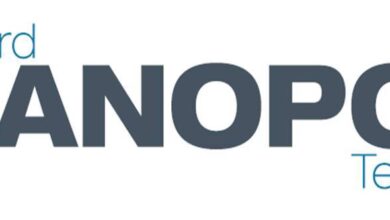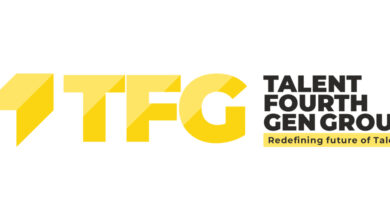Global Indoor Farming Technology Market Report 2021: Focus on Hydroponics, Aeroponics, Aquaponics, Soil-based, Hybrid – Forecast to 2026 – ResearchAndMarkets.com

DUBLIN–(BUSINESS WIRE)–The “Global Indoor Farming Technology Market by Growing System (Hydroponics, Aeroponics, Aquaponics, Soil-based, Hybrid), Facility Type, Component, Crop Type (Fruits & Vegetables, Herbs & Microgreens, Flowers & Ornamentals), and Region – Forecast to 2026” report has been added to ResearchAndMarkets.com’s offering.
The global indoor farming technology market is estimated at USD 14.5 billion in 2020 and is projected to grow at a CAGR of 9.4%, to reach USD 24.8 billion by 2026.
Indoor farming is followed to bolster local food supplies and provide nutritious, fresh produce to consumers. This method of farming controls plant-fertilizing nutrients, so the food that is grown using this technique is highly nutritious.
In indoor farming, a wide variety of crops such as leafy vegetables, herbs, vegetables, fruits, microgreens, and flowers can be grown. Indoor vertical farming systems provide organic food that is not contaminated with agrochemicals. These form the major driving forces for the indoor vertical farming along with the increasing consumer demand for pesticide- and herbicide-free food.
Hydroponics is estimated to account for the largest share in 2020 for indoor farming technology based on the growing system segment
Based on growing system, the hydroponics is estimated to account for the largest share in the indoor farming technology market in 2020. Hydroponics technology offers many benefits, including no use of soil and low cost of water, as the water remains in the system and can be reused. The nutrition levels can entirely be controlled, resulting in lower nutrient cost with stable and high yield. Hydroponics need a continuous flow of nutrients to prevent drying out of the roots, as they lack a medium to store water and nutrients which has resulted in its growing usage as an alternative source of agriculture.
The fruits & vegetables in the crop type segment is estimated to account for the largest share in 2020 in the indoor farming technology market
Based on crop type, the fruits & vegetables segment is estimated to account for the largest share in the indoor farming technology market in 2020. The consumption of fruits & vegetables has witnessed an overall double-digit growth in the last few decades, and this trend is expected to continue over the next few years. The ever growing population can be considered as a primary reason that has boosted the trend.
The high demand for fruits & vegetables has encouraged farmers to produce higher and better yields, owing to which they adopt modern and high-end technologies. Fruits & vegetables form an important segment of the indoor farming technology market since advanced greenhouse methods and technologies are used on a large scale to grow the produce throughout the year. Using indoor vertical farms for the production of fruits & vegetables, more outdoor area is made available for the production of cereals and fodder crops.
High growth is expected in the North America indoor farming technology market
North America is one of the largest indoor farming technology markets due to the rapid growth in the number of greenhouses and vertical farms in the US and Canada. Cultivators have been promoting this concept of farming, which is supported by the US government. Alternative and indoor farming techniques and technologies are becoming increasingly popular in urban areas to facilitate the supply of fresh vegetables to grocery stores. Rooftop farms – such as New York-based Gotham Greens (US) – are emerging as a new trend in urban farming methods in North America.
Market Dynamics
Drivers
- Rising Demand for Fresh Foods with Higher Nutritive Value
- Need for Higher Yields Using Limited Space and Water
- Lesser Impact of External Weather Conditions
Restraints
- High Initial Investments
- Limitations on the Types of Crops That Can be Grown
Opportunities
- Development of Innovative and Cost-Effective Technologies
- Production of Biopharmaceutical Products
Challenges
- Lack of Adequate Funding
- Shortage in the Availability of Skilled Workforce
- Risk of Equipment Failure and Delay in the Learning Curve Among Growers Resulting in Limited Market Growth
Leading players profiled in this report:
- Signify Holding (Netherlands)
- Everlight Electronics (China)
- Argus Control Systems (Canada)
- Lumigrow (US)
- Netafim (Israel)
- Logiqs (Netherlands)
- Richel Group (France)
- Vertical Farm Systems (Australia)
- General Hydroponics (US)
- Heliospectra AB (Sweden)
- Harwood Engineering Company, Inc. (US)
- Exdin Solutions (Poland)
- Nexthpp (US)
- Universal Pure (US)
- American Pasteurization Company (US)
For more information about this report visit https://www.researchandmarkets.com/r/jhh25u
Contacts
ResearchAndMarkets.com
Laura Wood, Senior Press Manager
[email protected]
For E.S.T Office Hours Call 1-917-300-0470
For U.S./CAN Toll Free Call 1-800-526-8630
For GMT Office Hours Call +353-1-416-8900




